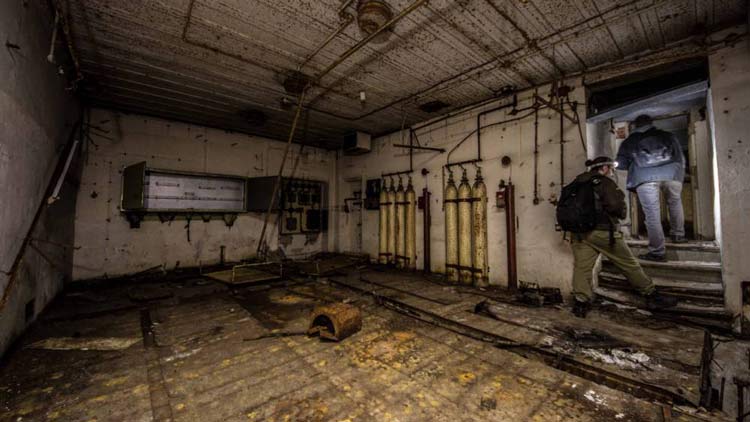
REWORD:
This room looks particularly interesting. There are tanks along the wall and something that resembles a long horizontal medicine cabinet. What on earth was kept in here? More rust and mold on the ceiling can be seen as well. Antisemitism was not a new concept when Hitler rose to power—and he preyed on this fear of the other by scapegoating Jews for the economic problems and social unrest Germany was facing after World War I. The historian and scholar Eberhard Jackel wrote about why the Holocaust was so shocking to those who lived through it.
“Never before had a state with the authority of its responsible leader decided and announced that a specific human group, including its aged, its women, and its children and infants, would be killed as quickly as possible, and then carried through this resolution using every possible means of state power.”
REWORD:
Though many of us are unable to visit harrowing historical sites like this one, the photos remind us that state sanctioned violence on a scale as massive as the Holocaust didn’t happen overnight. It took resources, supporters, and infrastructure. “Terrain militaire defense d’entrer,” as you see on the wall, translates to “‘Military ground, no entry.”
When the Third Reich was first established, they started ordering Jewish Germans by dividing the population into two categories: “national comrades” and “community aliens.” Nazis also further divided people by their perceived offenses: “racial” enemies (e.g. Jews and Romani), political enemies (e.g. Marxists and liberals), and moral enemies (e.g. gays and lesbians). The first step was propaganda that instilled fear about these groups and turned neighbors against them.




